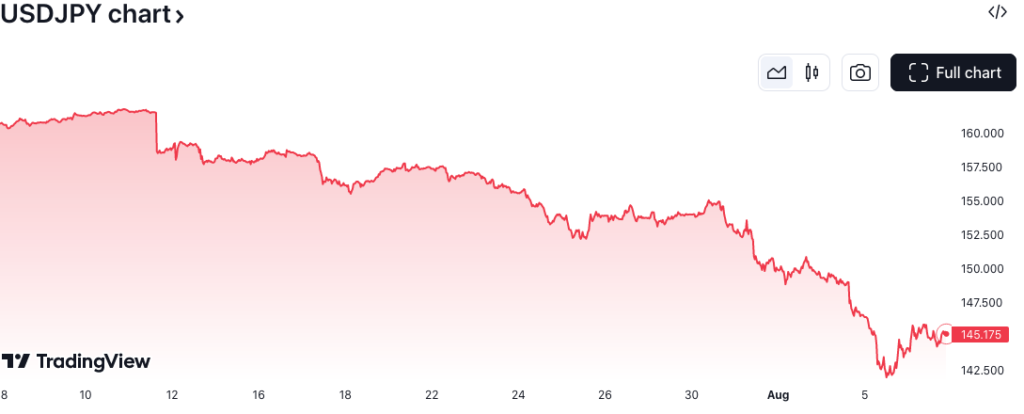On Monday August 5, Japan’s stock market index, the Nikkei 225, plunged 12.4% and suffered its worst 2-day drop in history. Many news channels have attributed the main catalyst of this crash to the unwinding of the so-called Japan Yen carry trade.

Reality is usually more complex and nuanced than a single reason. So although we don’t think this is the primary reason for the crash, it would still be a good opportunity to learn what this trading method is all about.
What is the JPY Carry Trade?
Firstly, traders borrow money in a zero or very low interest-rate currency. The benchmark interest rate for the Japanese Yen was set by the Bank of Japan to be 0 – 0.1% for many years. So this made the trade very viable and profitable.
Next, traders would convert the borrowed money into another currency and invest it in something that gave a return rate higher than 0.1%. In this case, traders converted borrowed Japanese Yen into US dollars and invested that into US Treasury bonds for an average return of 5% per year. It was essentially an easy and sure way to profit. Until it broke down.
What happened?

The continuous fall in the exchange rate for USD to JPY since 11 July meant that those profits in USD became a lot less in JPY. In fact, in most cases, it ended up in a loss. Then, the Bank of Japan rose interest rates to in an effort to combat inflation to 0.35%. You many think that such a small increase in percentage points shouldn’t amount to much, but coupled with the recent sharp decline in US stocks and the sharp rise of the Yen yield, traders who were highly leveraged, (meaning they borrowed large amounts of Yen many times over their principal capital), had to unwind their trades quickly to be able to repay or shore up their accounts (otherwise known as a margin call).
It started happening on 11 July
But there are some problems with using this to explain the huge Nikkei sell off. In March earlier this year, the Bank of Japan already did raise the interest rate to 0.2%. Yet the Nikkei and US stock markets went on to climb higher. It was only last week that Bank of Japan raised it further to 0.35%, coinciding with the large amount of selling in US tech stocks. Also, JPY had already begun to climb against the USD earlier in July.

So several things were already in motion before becoming an avalanche on 5 August.